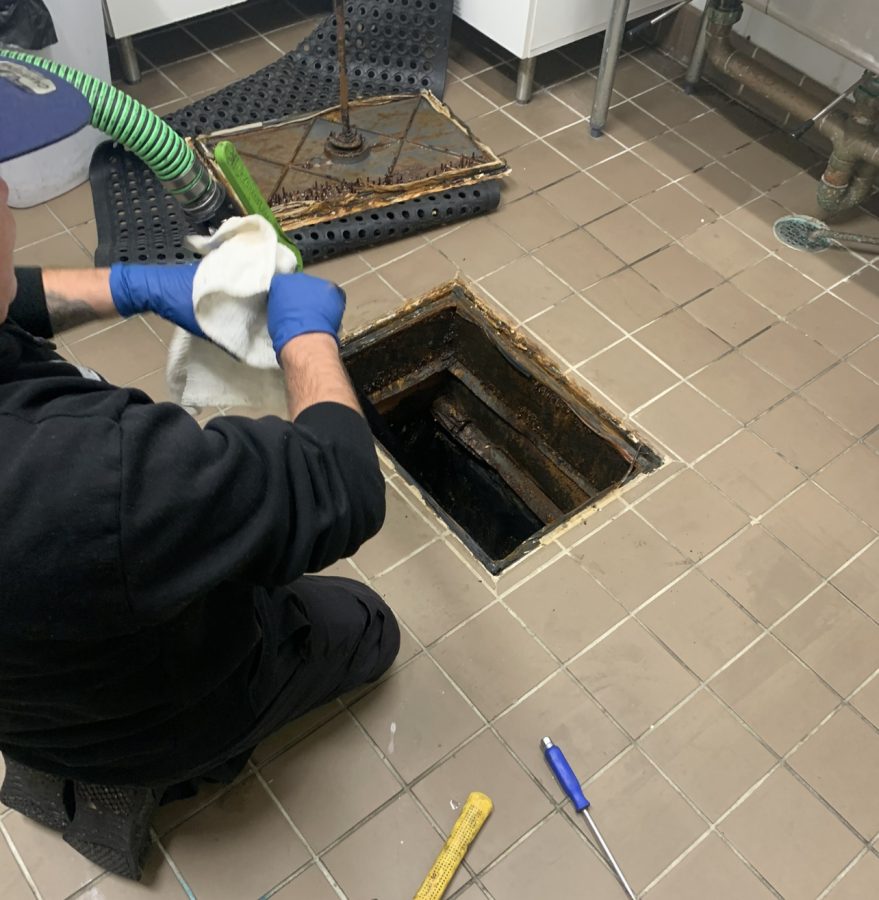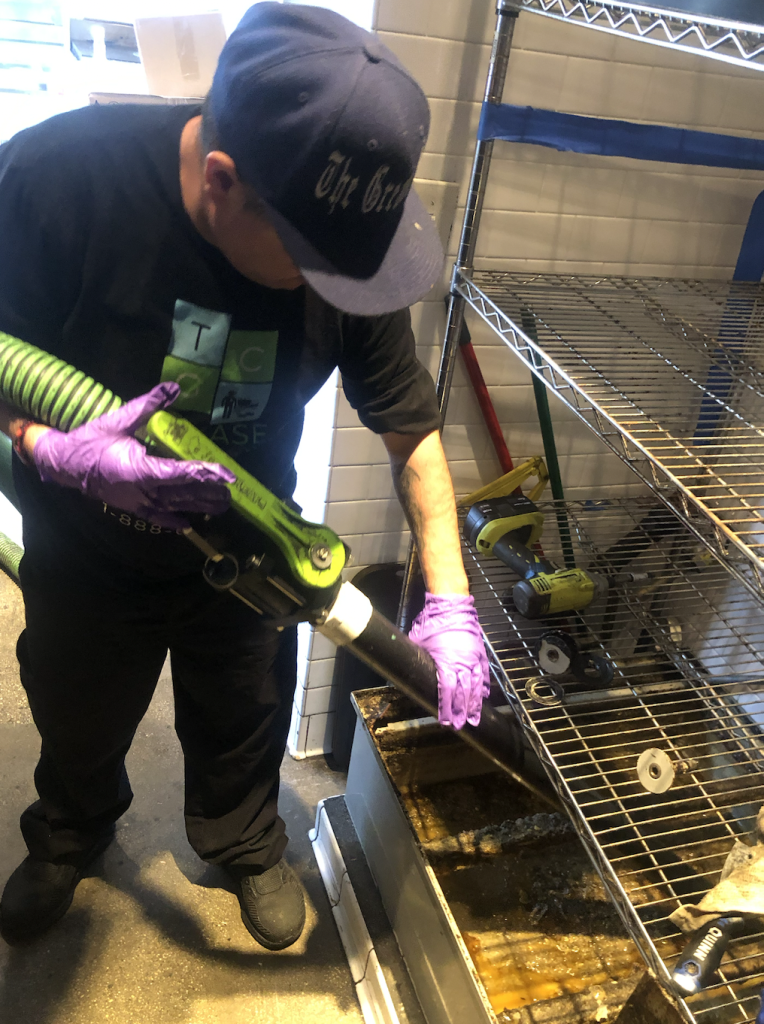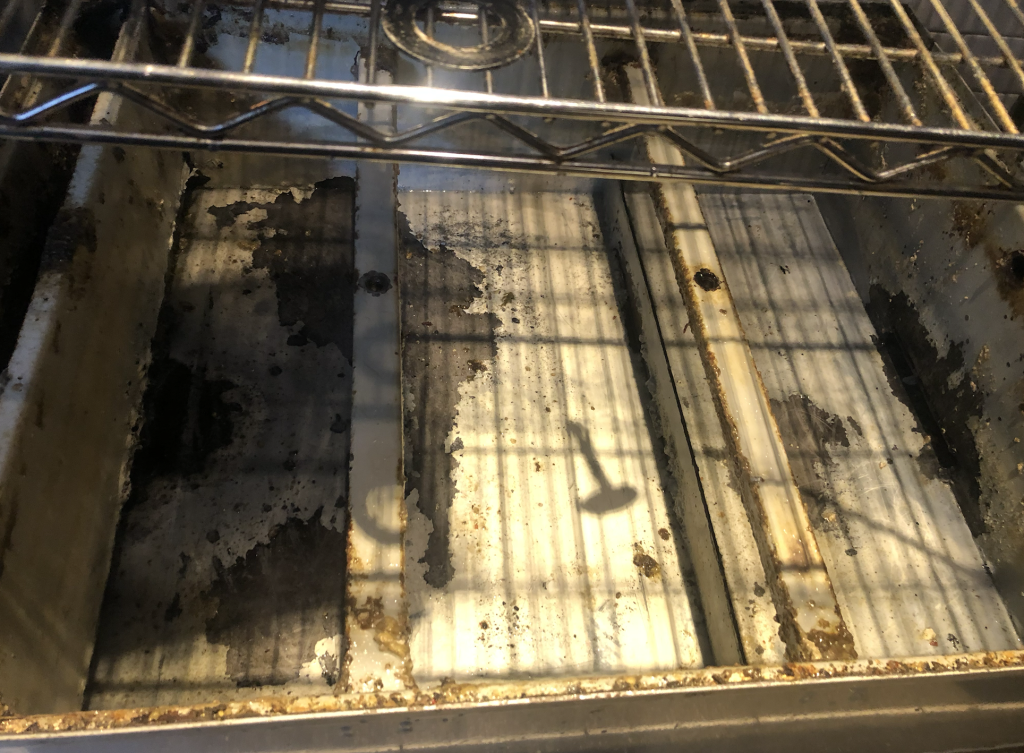

Without proper maintenance you can damage the unit, experience plumbing issues, have odor issues, and most of all, get a citation from the city and health department officials. Hiring a grease trap cleaning company can help you eliminate issues that can prevent your commercial kitchen run efficiently.
Grease traps are a common part of commercial kitchens, but many people don’t know what they are or how they work. A grease trap is used in commercial kitchens to collect grease and food waste. It is an underground container that has a lid on top, which is then removed to empty it. Grease traps are normally located in the kitchen of a restaurant or other food establishment. The idea is that the grease and food waste also known as FOGS will be intercepted before it goes into the sanitation sewer line.
Purpose of a Commercial Grease Trap
A grease trap is a device that is used to catch grease, food solids, and other liquids that come from the kitchen drains. It is a plumbing device that is required for commercial kitchens: restaurants, hotels, amusement parks, etc, that have commercial kitchens. The grease trap is connected between the kitchen drains and the sewer. Most grease traps are used in commercial kitchens. Many restaurants and cafeterias use grease traps to prevent sewer contamination. It is important to clean a grease trap before it releases FOGS waste into the sewer line causing plumbing issues.
Steps of Cleaning a Grease Trap
Grease trap cleaning is an important task to maintain the proper functioning of a commercial kitchen. Here are some recommended steps for grease trap cleaning:
- Turn off all water sources that flow into the grease trap.
- Remove the lid of the grease trap carefully, being mindful of any suction that may be present.
- Using a scoop or a spatula, remove all the grease and solid waste from the grease trap and place it in a sealable container.
- Use a hose or a pressure washer to rinse the grease trap thoroughly. Be sure to rinse the walls, bottom, and baffle of the grease trap.
- Once the grease trap is cleaned, reassemble the lid and make sure it is secured tightly.
- Dispose of the waste in accordance with local regulations.
It is recommended to clean the grease trap at least once a month, or more frequently depending on the volume of grease and food waste produced by the kitchen. It is also recommended to hire a professional cleaning service to ensure that the grease trap is cleaned properly and thoroughly.
How FOGS Are Intercepted
A grease trap is a device used to trap the fats, oils, grease, and food solids FOGS waste from contaminating the sewer system. It is an essential part of any kitchen that requires to be cleaned regularly to avoid drain back-up and overflow.

There are three major content inside the grease trap: 1. Grease Waste 2. Waste Water 3. Settle solids. When the contaminated liquids pass through the grease trap it will use the water to gravity settle the FOGS waste and prevent the majority of grease and food solids from going out into the sewer line.
Ways To Clean A Restaurant Commercial Trap
If you have a grease trap inside your kitchen, you might notice that it gets full quickly because of its size. It also might be difficult to clean if you don’t have the right equipment and a place to dispose of the waste. Indoor grease traps are recommended to be fully cleaned every month removing all its content and properly disposing of the waste at a wastewater treatment plant.
To properly clean a grease trap it is necessary to have the right tools, service equipment, and a source of disposal. Due to the clean-up procedure and the hassle of having to dispose of the waste, the majority of businesses use a grease trap cleaning company. Servicing a grease trap is a requirement by the city and failing to do so will lead to acquiring a citation. Furthermore, the lack of improper cleansing will lead to major plumbing problems and tank corrosion that can be very costly for the business in the long run.
Conclusion
Grease traps are plumbing fixtures designed to trap and store grease, oils, grease, and other food particles produced during cooking. Grease separators are usually found in commercial kitchens such as restaurants, hotels, cafeterias, etc.. The grease trap is under the sink. It is important to clean your grease traps regularly to keep them functioning properly and avoid costly plumbing issues.
